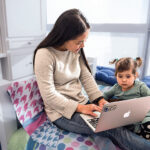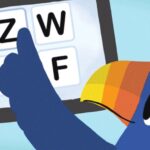Online data mining adds to the picture of vaping-related lung disease

Severe lung disease related to vaping has been surging across the U.S., with the eighth death confirmed last week by the Centers for Disease Control and Prevention. A brief report in The New England Journal of Medicine suggests that online data-mining tools can supplement traditional public health surveillance and help officials stay ahead of this sudden epidemic.
Yulin Hswen, PhD and John Brownstein, PhD, of Boston Children’s Hospital’s Innovation & Digital Accelerator Program and Harvard Medical School, first picked up eight suspected cases of vaping-associated lung disease on July 25 using their HealthMap digital disease surveillance platform. That early alarm came more than a month before CDC’s announcement of cases of vaping-associated lung disease on Sept 6th, 2019.

Capturing cases under investigation
HealthMap integrates information from official reports with data from informal Internet sources, including local news reports, online forums, and eyewitness reports on social media. Its broader net has picked up suspected cases of vape-related lung injury not known to the CDC.
For example, on September 19, the CDC reported 530 confirmed or probable cases to date, from 38 states and one U.S. territory. In contrast, as of September 20, HealthMap had identified a total of 908 cases across 45 states and the U.S. Virgin Islands (495 confirmed, 413 suspected). By capturing suspected cases under investigation, HealthMap offers a more complete picture of the vaping outbreak, says Hswen.


Hswen believes that early insights from informal online surveillance could potentially help redirect public health action and head off new cases. Moreover, online data might help pinpoint the precise vaping components causing the lung disease. Already, they suggest that a rise in “homebrew” vaping recipes and counterfeit e-cigarette parts could be behind the outbreak.
“Online informal sources have shown a steep rise in the use of black market vaping juices, diluting cutting agents, and counterfeit hardware pieces for electronic cigarettes,” Hswen says. “And evidence has documented that user modification of electronic cigarettes and e-liquid adulteration are dangerous to the pulmonary alveolar regions.”
Related Posts :
-

Five things to know before getting an online second opinion for your child
Whether you want to confirm your child’s diagnosis or treatment plan, another set of expert eyes can give you ...
-

EarlyBird: Addressing dyslexia through game play
Up to 10 percent of the population has dyslexia, yet many children are diagnosed only after struggling with reading for years. ...
-

Will people accept a fentanyl vaccine? Interviews draw thoughtful responses
In 2022, more than 100,000 people died from opioid overdoses in the U.S., according to the National Center for Health Statistics. ...
-

Naloxone on demand: Shining a light to reverse opioid overdose
Overdose deaths from fentanyl and other opioids are at record highs in the U.S. Naloxone, if delivered soon after ...





